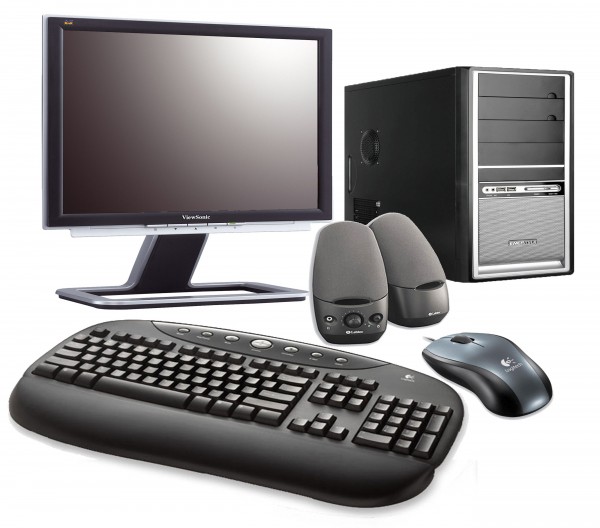Upgrade a PC
Saving money and reducing waste are just a couple of benefits of upgrading an “obsolete” computer and making it usable again. Many computers aren’t actually obsolete; these machines are simply labeled outdated because they are already two or three years old.
For most people, having the fastest processor, the biggest hard drive, and the most powerful graphic card on the market may not be necessary, but high-end computers will have longer useful life. In many cases, high-end computers are comparable to middle-level computers in four or five years. For example, a high-end computer built in 2006, with Core 2 Extreme X6800 and GeForce 8800 GTX SLI, can still run Windows 7 and many latest games in 2011 at medium to high details. But if you use your computer only for e-mail, Internet browsing, and word processing, it is possible to hold on to an eight-year old computer (built in 2003), as long as you’re contend with Windows XP SP2, Microsoft Office 2003 and the like. But major computer manufacturers can’t survive for long if consumers decide to buy computers every eight years, manufacturers spend a fortune in marketing efforts to convince old customers and potential buyers to purchase their new products. But it’s all hype! In many cases, extending the computer life typically involves only upgrading two or even one component.
If you often get “low disk space” error and can’t delete any files, then buy a second hard drive (but don’t buy a SATA II hard drive, if your motherboard can only support IDE). If your applications are slow and you have a bloated virtual memory, add or upgrade memory modules. If latest games run like slideshow in your computer, then buy new graphic card. If you’re really trying to keep your expenses down, upgrading is the best bang for the buck. Often, simply by formatting the hard drive and reinstalling Windows will give a new lease of life to your computer
Some companies will auction off or sell their surplus PCs to employees. It is also a good example of repurposing a computer and; if you are feeling a little brave, you can make a fine little server for your home network.
Before upgrading, you should be sure that adding a second hard drive or replacing the graphic card is all that is necessary to give your PC longer useful life. This is a dirty, little secret that all computer salespeople won’t share with you!
Build a PC
There are good many reasons for building your own computer. Being able to decide the exact configuration of your computer is a major advantage.
Let’s define what is DIY, going to a computer manufacturer web site and ordering a custom-built computer may seem like a DIY, but it’s not.
DIY is started by performing adequate research and buying individual parts that will go into the new PC. You could buy the parts online or from a local store. The DIY comes when there is a complete set of unassembled computer parts in front of you, including operating system and software DVDs. That’s DIY.
If you’ve done a proper research and are buying parts individually from sellers that offer the lowest price, you will save a good deal of money. You shouldn’t be uneasy about purchasing “older” components, because it may mean you can get a bigger hard drive or the latest processor. With the internet, you can compare prices easily, for example, by using Pricewatch.com you can often get a bargain even for a new, powerful component.
While we won’t save as much cash on a DIY as we would upgrading on an existing computer, we may still find the savings significant when compared to buying a branded PC.
Buy a PC
Of course, we like the idea of brand-new computers, the new-PC smell may seem like a trivial matter, but it often gives a big psychological impact even if you won’t admit or don’t realize it. New branded PC always come in a box, it is shiny, smooth and under warranty. You connect the speaker, turn the computer on, and get really impressed. After registering some of those preinstalled apps online, you can immediately start typing, listening, or playing. New computers are certainly a breeze. You can’t get that same feeling with a DIY or upgraded computer.
Despite their higher prices, branded computers provide a value that is obviously in demand by a specific market segment. Not everyone feels comfortable using assembled or upgraded PC. PC manufacturers definitely give them nice products for the price.
But even when you are buying a new branded PC, there are still a few ways to save some money. You just have to exert some self-control and perhaps do some research to know what you should or shouldn’t buy.
First, remember that most pre-built PC manufacturers often offer low-cost base units. They usually doesn’t come with the fastest or biggest components available and, in many cases, you only get free OS, like Linux or DOS. Check the small print and know what you’re getting.
Then, they allow you to do customization by selecting components in combo-boxes according to certain categories. This is a crucial part and you should have a good self-control and make your selections based on your research and requirements. Is the 2GHz processor in the base unit adequate, or should you invest an extra $100 to have a 3GHz processor? Here’s a useful trick: Get prices for both components in Pricewatch.com and if the upgrade cost is higher than the actual price difference between the two, you are getting a bad deal. You may find that by the time you are finished upgrading the base unit with the components you want, the final price tag may have jumped anywhere from 20% to 100%! And remember, you still need to buy an OS and some software.
Carefully check the OS, a base unit may come with lower operating system edition, such as Windows 7 Home Basic, not Windows 7 Home Premium, again, read the fine print! You will then be given the chance to upgrade to a higher edition of Windows 7. It maybe a bad idea to choose Windows Vista right now, as Windows 7 can give you a lot more at a little higher price.
Finally, while customizing the base unit, you will be given an opportunity to add preinstalled software, such as office package, image/video editing and antivirus. You can always buy them separately from the nearest computer store in your town, but PC sellers usually give you a small discount if you purchase the software from them. As always, ask yourself, “Are those applications really necessary, or can I get free alternatives? It’s really easy to just tick off those boxes and buy tons of software, so be careful.
When choosing a prebuilt PC and customizing its software, we can get a little click-happy and build an “ultimate PC.” Thankfully, at the end of the customization process, you’re given with the final price tag for your newly configured machine. If you’re lucky, you’ll notice it and receive a nasty shock, this way you can return and change your selections, removing an application here and changing one there, until you get a balanced configuration. Remember that any extra money you save on software, may allow you to buy more advanced hardware. For example, if you’re ordering a customized gaming rig, it is probably a good idea to download the latest OpenOffice release, this way you’ll save $280 needed to buy Microsoft Office Standard 2010. The extra money can be used to buy another graphic card to build an SLI setup.











i think you have covered almost all the things to keep in mind when planning to upgrade a PC. great artcile
Congratulations, you literally wrote one of the best posts I’ve seen in forever. If your blog isn’t already taking off, it definitely will if you keep sharing posts like this one.